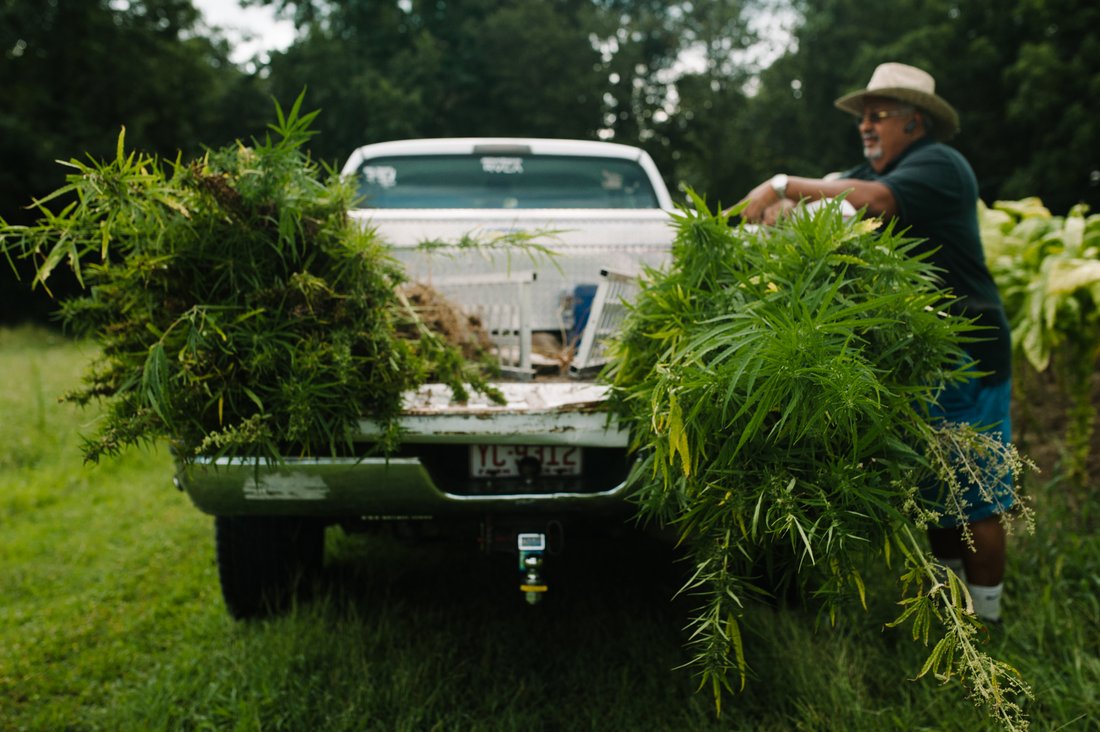Hemp holds tremendous potential as a crop that can contribute to restoring our working landscapes, revitalizing our regional economies, and rethinking the impact of the way we clothe ourselves. Our worldwide fiber consumption has tipped the scale toward a reliance on fossil-fuel derived synthetics, yet bast fibers and blended fabrics emerge as a soil-based solution — their properties of breathability, natural moisture wicking and anti-microbial features, combined with hemp’s biomass-dense and drought-tolerant features, offer a path away from microplastics and toward regenerative systems. In our latest exploration of regional approaches to hemp research, we have partnered with a dynamic team in Northeastern North Carolina: read on to learn more about their efforts.
Photographed by Anna Carson Dewitt
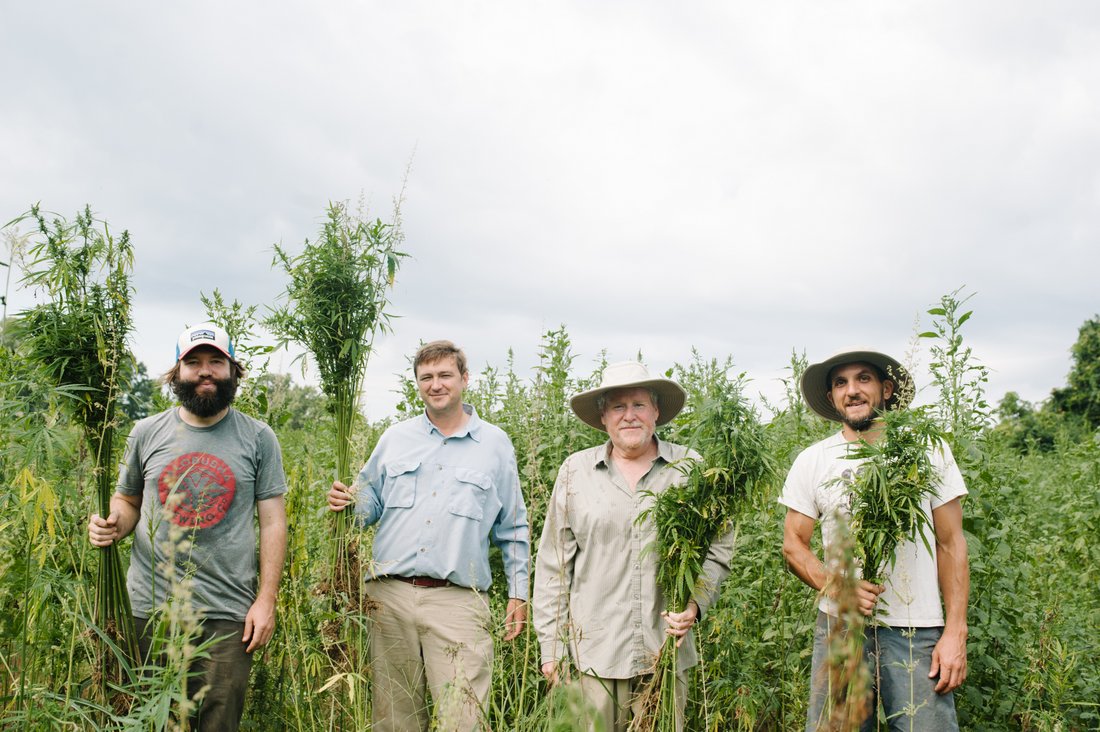
On the day of the harvest of the industrial hemp variety trial in North Carolina, we packed up the truck with some harvest tools and grabbed some friends from
Bountiful Backyards in Durham, NC and
Homegrown Agriculture in Bethel, NC, to make the trip out to the plot to harvest the crop and set up for drying. Again we came not knowing what exactly to expect – the weather since our last visit had stayed consistent with a few showers mixed into a month of dry weeks.
Considering this, we were pleasantly surprised with what we had to harvest: clear differentiation between the different varieties, and stalks ranging from 3 feet in height to 5 feet. More flowering and seed sprouting was observed. The average thickness of the stalks was just smaller than the size of a Sharpie.
We brought a few different types of hand tools to try out for harvest – knives, a hoe, a few reaper blades, a machete, even a small hand saw. Industrial hemp is a member of the (Moraceae) mulberry family, so we expected some tough cutting through the lignins and cellulosic material to get our plants. (Want to hop down the hemp fiber rabbit-hole?
Here’s a good start).
The plant was indeed tough – hoes and saws work quite well, but are inefficient. Same for the machete, though it was a bit faster. Any knives used would need to be well sharpened beforehand. The easiest and most efficient way we found? Pull it right out of the ground by hand and bundle it with hay bale twine. The roots ended up being shallow enough for easy removal. After two hours between four people harvesting and sorting a quarter-acre of the trial, we harvested around 5-6 pound bundles of green material for the 8 different varieties.
The next steps in processing the fresh stalks are drying/retting, decortication, and degumming. We expect this to yield to around one pound of usable finished fiber per bundle that can then be spun. The fiber bundles were taken to a wire rack in the barn on-site to dry before next steps and thus concluding the physical trial.
Reviewing the variety results can shed light on tangible opportunities for the crop in 2018 and beyond, keeping in mind the conditions under which the trial was planted as presented in
the first blog. The best variety we observed in terms of germination, thickness of the stalk, and height was a French variety cultivated for both grain and fiber called Fedora 17. The tallest variety was Carmagnola Select, a dioecious variety selected for its fiber from an old landrace strain from Northern Italy. Santhica 27, a French fiber variety, had a model consistency of stalk thickness and height.
Other varieties tested (in no particular order) were Carmagnola, Ferimon, Felina 32, Futura 75, and USO 31. Researchers at North Dakota State University published their results on several of these same varieties last year; an informative read that can be
found here. A quality source of seed guaranteed not to “test hot” and with some reliable growth information will be critical to getting the industry off of the ground.
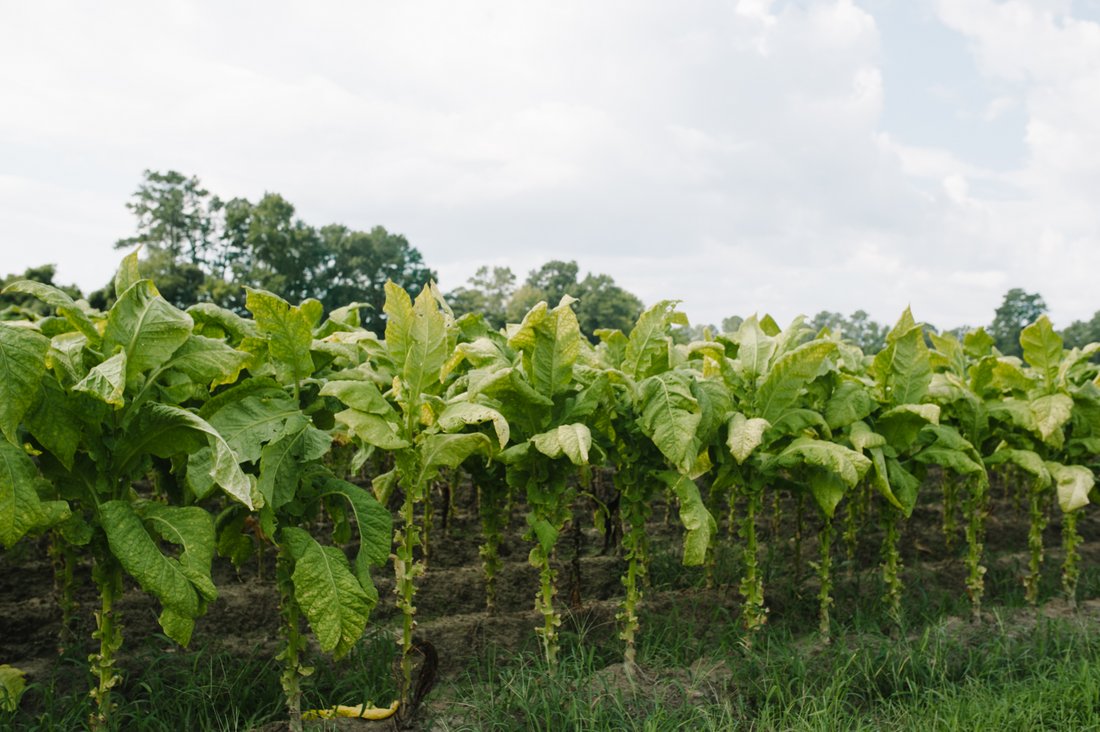
Tracking these varieties and their characteristics for growth is a useful study for any farmer thinking about getting into production of the crop, and a diversified planting of at least two or three varieties is probably best. If diversifying seed stock is not available for some reason, experimenting with different seeding rates is another practical and useful trial to create, as is analyzing the considerable amount data that should come out of the university from the first year of the pilot program.
Markets for the crop were sparse in 2017 as the uncertainty over legal issues and market making potential elevated risk and slowed the influx of capital into infrastructure investments, but that should not be taken to mean there was no movement. Many business opportunities for pre- and post-processing of the crop are being analyzed and introduced as business cases as I type, but for consistency to settle in, it may take 3-5 years for advances for all parts of the crop. But the opportunities using hemp in the modern world are
plentiful.
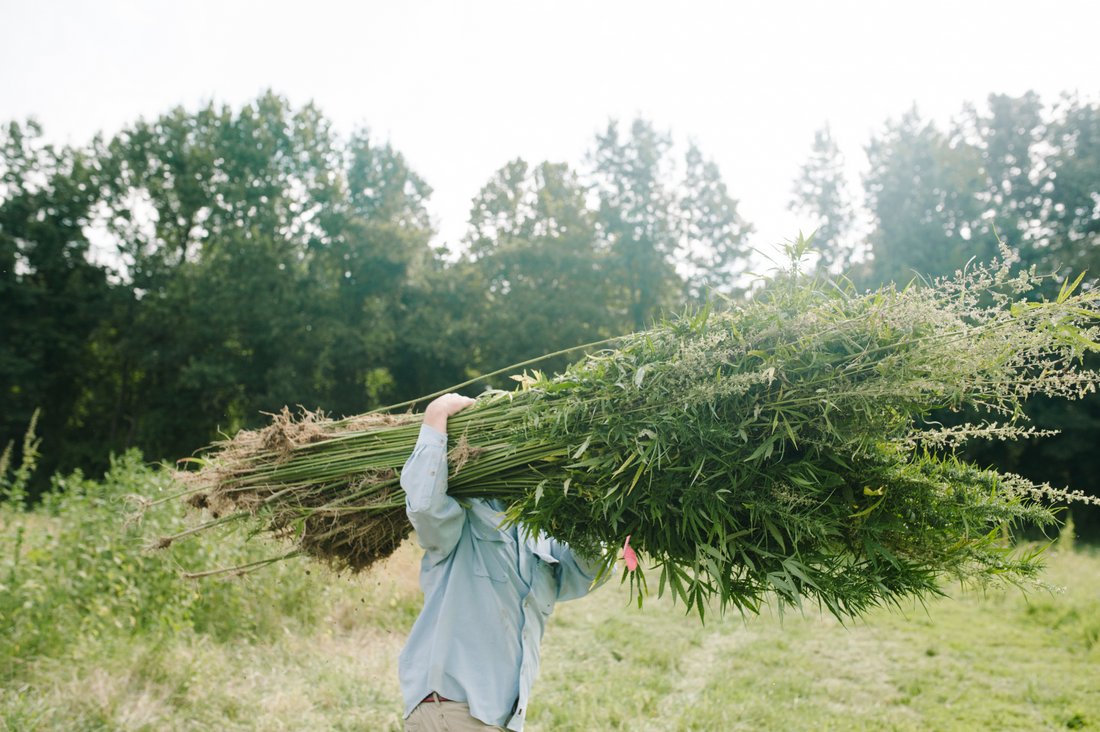
For selling the flower, a farmer would need to connect with an extraction company who could turn their product into cannabidiol oil or isolate for final product formulation. The excitement and the economic potential behind this particular product has driven much investment and is likely to connect with buyers, but is still highly speculative and may be subject to wildly fluctuating prices and whispers. The infrastructure for extraction is also quite expensive, so seeds/clones/inputs are also very pricey at the moment. To sell the grain, a product would need to be cleaned, dried, and potentially sorted before it can be taken to market.
Fortunately, North Carolina is home to an immense number of small and larger grocer markets in North Carolina, making it possible for small producers to partner on one-off projects or small, consistent purchase orders, and for larger distributors to integrate the local grain into their supply chains.
Fiber processing requires a bit more processing attention: the typical process involves decortication, degumming, spinning, and weaving before it is commercially available, but creative opportunities through partnerships are abundant. For more on the steps of cottage industry hemp textile production through creative partnerships, read through the
Kentucky Cloth Lookbook.
Fiber in North Carolina has a real cottage industry potential. Outside of market production, hemp invites one to be creative about how it can be used. Education? Grow and cut a hemp maze for Fall fun. Sustainability? Hemp has the potential to aid in the
drawdown of carbon. Research? Partner with a university or community college – there are a thousand easy ways to research the crop right now. The best way to grow hemp? Wide-eyed, with love and joy.

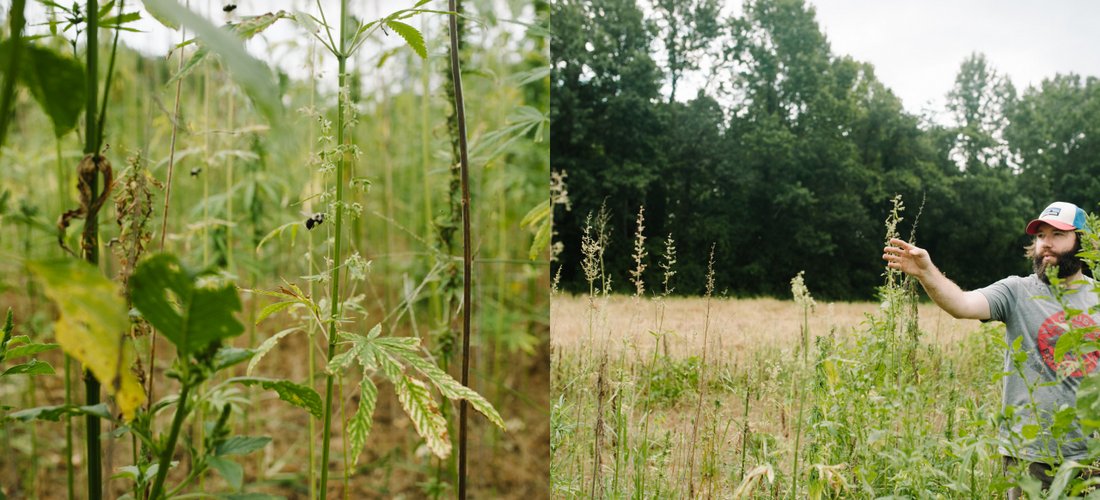
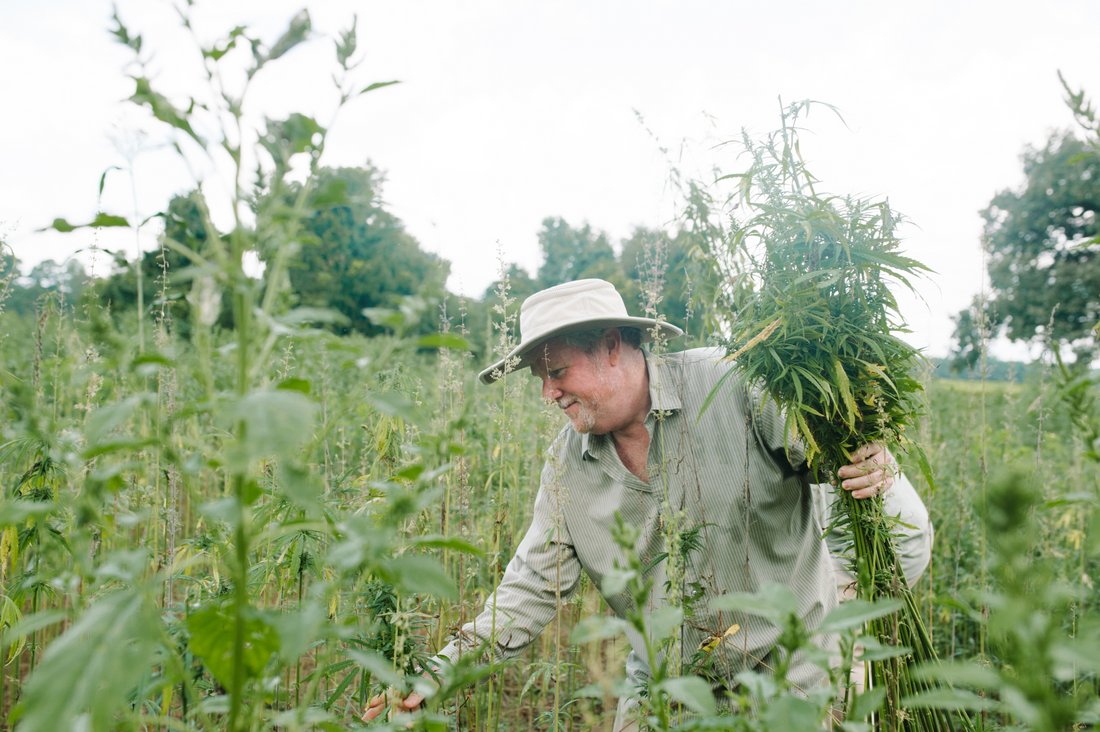
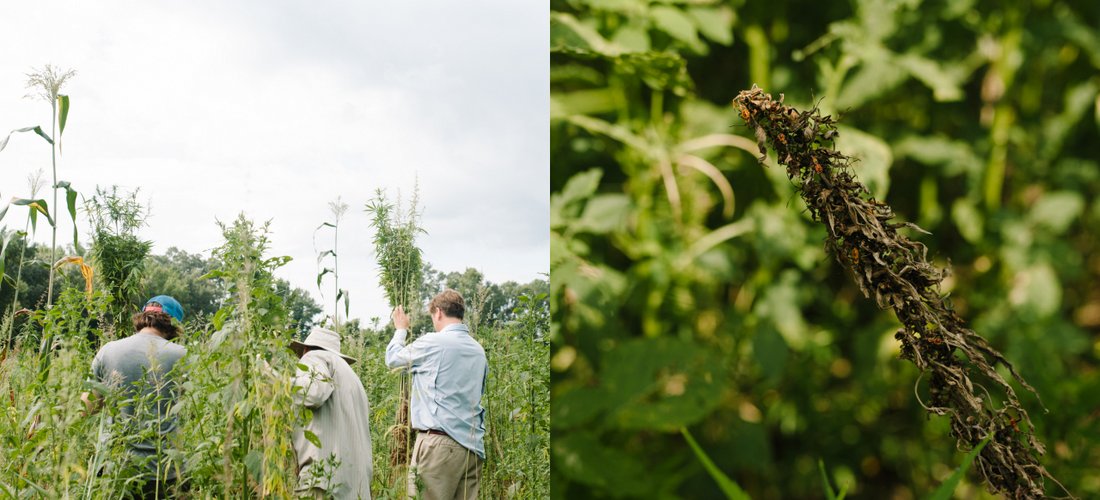
 Tracking these varieties and their characteristics for growth is a useful study for any farmer thinking about getting into production of the crop, and a diversified planting of at least two or three varieties is probably best. If diversifying seed stock is not available for some reason, experimenting with different seeding rates is another practical and useful trial to create, as is analyzing the considerable amount data that should come out of the university from the first year of the pilot program.
Tracking these varieties and their characteristics for growth is a useful study for any farmer thinking about getting into production of the crop, and a diversified planting of at least two or three varieties is probably best. If diversifying seed stock is not available for some reason, experimenting with different seeding rates is another practical and useful trial to create, as is analyzing the considerable amount data that should come out of the university from the first year of the pilot program.
